Yoga with a rope!
Yoga Kurunta is a series of asanas practised with a rope suspended on the wall.
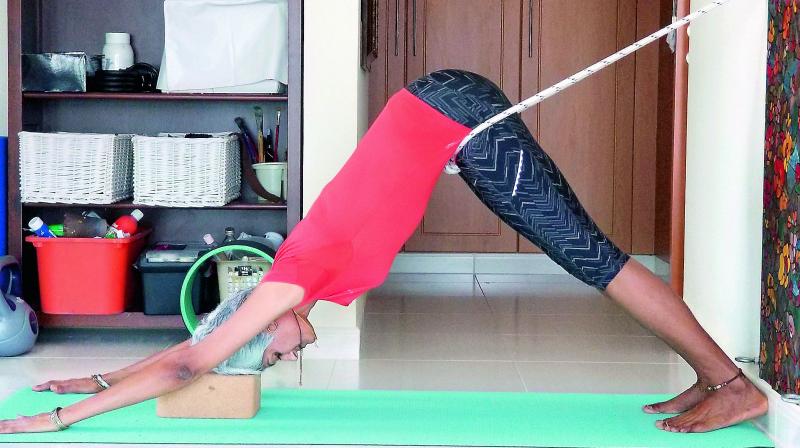
What makes yoga different from other types of exercises is that it is all about a process towards attaining a healthy mind by making the body healthy. However, yoga is not all about postures (asanas). One can also use various objects to attain the exact posture. Yoga Kurunta is a series of asanas practised with a rope suspended on a wall. These ropes allow the yoga practitioner to go deeper in various asanas. A rope wall can be an invaluable tool for the stiff, elderly, and for those suffering from any injury. As the practice is based on alignment and breath, the practitioners become more aware of the orientation of their bodies. With strong emphasis on anatomy, students of all ages, size and level of practice will experience greater opening of certain areas while strengthening and toning their bodies. Once you experience positive results, you will want to get back to the wall more often. A committed and consistent practice session is bound to leave you feeling taller, energetic and suppler in your spine. However, the asanas should only be practiced under the guidance of a trained yoga teacher.
Adhomukhasvanasana
The asana, along with stimulating the nerves also lengthens the spine, which is great for people suffering from lower back problems. Firstly step into the loop of the rope. The basic posture is when feet are hip width or slightly wider if legs are stiff and hands are shoulder width apart. Place the heels on the wall approximately one or two inches and the balls of the feet should be on the floor. Place the rope comfortably at the crease of the top of the thighs, well below the abdomn. A block can be used to support the head. Adjust the height of the block accordingly to reach the head. You should take care not to force the head down. Lift the kneecaps and tighten the thighs. Straighten the elbows and extend the arms forward. Lengthen the sides of the torso. To get the complete benefit of the asana rest the head and neck.
Sirsasana
This asana helps to increase blood supply to the brain cells, which enhances clarity of thought, increases concentration and sharpens memory. For doing it join both the long ropes with the shorter rope and place a blanket on the base of the rope so that you can position your sacrum on the blanket. Leaning back on the rope, place one foot on the wall and then the other foot too. Hold the rope at the top so that the arms are extended. Drop the rope to the tailbone. Join the feet in Baddhakonasana. Gently drop the torso to the floor and rest your head on the arms that are folded at the elbows. Or one can place a bolster on the floor to support the head. To come out of the pose, hold the rope and gently pull yourself up. Walk the hands up high on the ropes, press the feet onto the wall, take a couple of breaths and ease out of the pose by stepping down onto the floor.
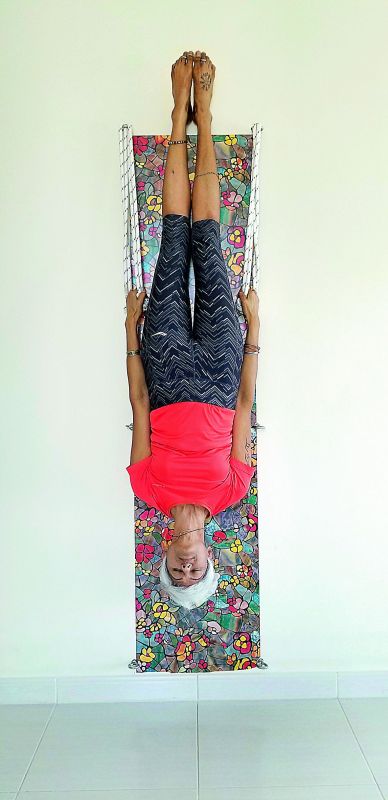
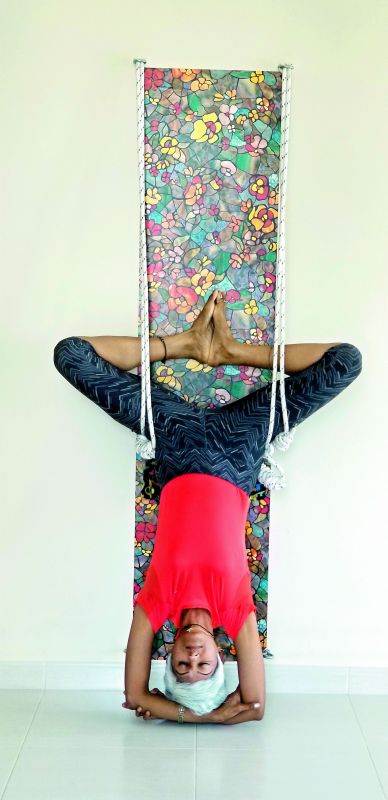
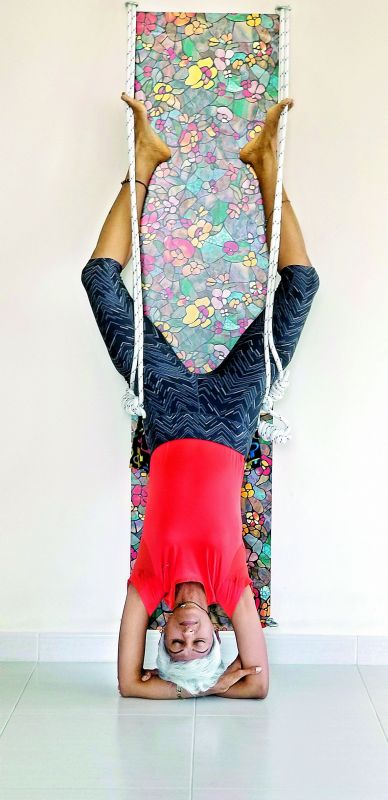
BaddhaKonasana
As the asana stimulates the heart and reproductive organs and improves circulation in the pelvic region, it can prove to be very effective for pregnant women. It also helps in reducing the mensural pain. Sit on a block closer to the wall and spread the buttock bones by pressing the heels. Using a belt, hold both the the feet together in place near the groin area. Lift the spine up by grabbing the ropes. Gently release the ropes to come out of the pose.
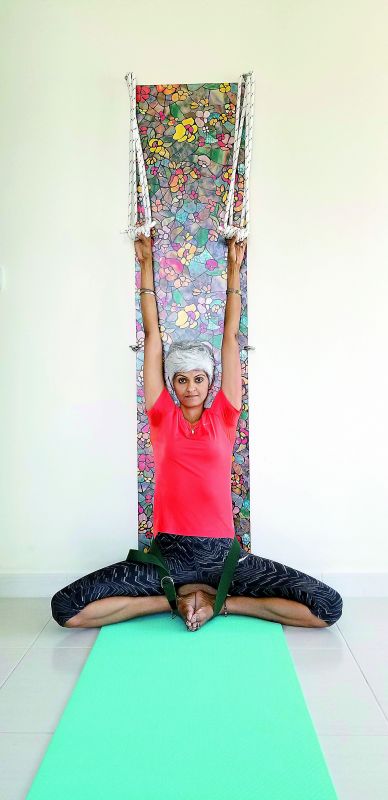
Trikonasana
The initial pose for this asana is to stand in Tadasana. then slowly increase the gap between both feet. Turn the right foot to the right side, stretch the arms sideways and raise them to shoulder level. Holding the rope, bend to the right, taking care not to bring the body forward.
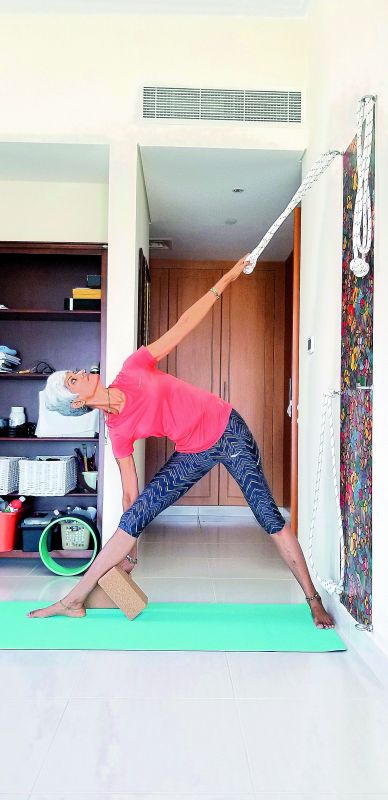
Place a block near the shin area for support. Press the right palm onto the block and look up to the ceiling. Return to the upright position gently and repeat on the other side. This asana is again helpful for those who want to strengthen their spine. It also helps in relieving gastritis, indigestion, acidity and flatulence
(Renuka Krishnan is a Sujok Therapist, Yoga Instructor, Plant-based Nutritionist and Wellness Coach.)

